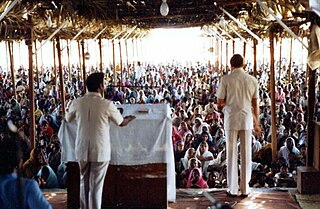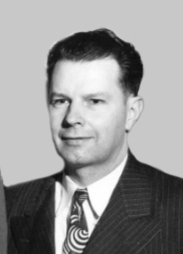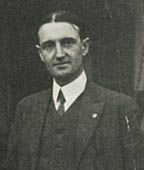Pentecostalism or classical Pentecostalism is a Protestant Charismatic Christian movement that emphasizes direct personal experience of God through baptism with the Holy Spirit. The term Pentecostal is derived from Pentecost, an event that commemorates the descent of the Holy Spirit upon the Apostles and other followers of Jesus Christ while they were in Jerusalem celebrating the Feast of Weeks, as described in the Acts of the Apostles.
The Third Great Awakening refers to a historical period proposed by William G. McLoughlin that was marked by religious activism in American history and spans the late 1850s to the early 20th century. It influenced pietistic Protestant denominations and had a strong element of social activism. It gathered strength from the postmillennial belief that the Second Coming of Christ would occur after mankind had reformed the entire Earth. It was affiliated with the Social Gospel movement, which applied Christianity to social issues and gained its force from the awakening, as did the worldwide missionary movement. New groupings emerged, such as the Holiness movement and Nazarene and Pentecostal movements, and also Jehovah's Witnesses, Spiritualism, Theosophy, Thelema, and Christian Science. The era saw the adoption of a number of moral causes, such as the abolition of slavery and prohibition.

Charles Grandison Finney was a controversial American Presbyterian minister and leader in the Second Great Awakening in the United States. He has been called the "Father of Old Revivalism". Finney rejected much of traditional Reformed theology.
The Holiness movement is a Christian movement that emerged chiefly within 19th-century Methodism, and to a lesser extent influenced other traditions such as Quakerism, Anabaptism, and Restorationism. The movement is historically distinguished by its emphasis on the doctrine of a second work of grace, which is called entire sanctification or Christian perfection. The word Holiness refers specifically to the belief in entire sanctification as a definite, second work of grace, in which original sin is cleansed, the heart is made perfect in love, and the believer is empowered to serve God. Churches aligned with the holiness movement additionally teach that the Christian life should be free of sin. For the Holiness movement, "the term 'perfection' signifies completeness of Christian character; its freedom from all sin, and possession of all the graces of the Spirit, complete in kind." A number of Christian denominations, parachurch organizations, and movements emphasize those Holiness beliefs as central doctrine.
The Azusa Street Revival was a historic series of revival meetings that took place in Los Angeles, California. It was led by William J. Seymour, an African-American preacher. The revival began on April 9, 1906, and continued until roughly 1915.

The camp meeting is a form of Protestant Christian religious service originating in England and Scotland as an evangelical event in association with the communion season. It was held for worship, preaching and communion on the American frontier during the Second Great Awakening of the early 19th century. Revivals and camp meetings continued to be held by various denominations, and in some areas of the mid-Atlantic, led to the development of seasonal cottages for meetings.

A revival meeting is a series of Christian religious services held to inspire active members of a church body to gain new converts and to call sinners to repent. Those who lead revival services are known as revivalists. Nineteenth-century Baptist preacher Charles Spurgeon said, "Many blessings may come to the unconverted in consequence of a revival among Christians, but the revival itself has to do only with those who already possess spiritual life." These meetings are usually conducted by churches or missionary organizations throughout the world. Notable historic revival meetings were conducted in the United States by evangelist Billy Sunday and in Wales by evangelist Evan Roberts. Revival services occur in local churches, brush arbor revivals, tent revivals, and camp meetings.

William Joseph Seymour was a Holiness Pentecostal preacher who initiated the Azusa Street Revival, an influential event in the rise of the Pentecostal and Charismatic movements, particularly Holiness Pentecostalism. He was the second of eight children born in an African-American family to emancipated slaves and raised Catholic in extreme poverty in Louisiana.

Charles Fox Parham was an American preacher and evangelist. Together with William J. Seymour, Parham was one of the two central figures in the development and initial spread of early Pentecostalism, known as Holiness Pentecostalism. It was Parham who associated glossolalia with the baptism in the Holy Spirit, a theological connection crucial to the emergence of Pentecostalism as a distinct movement. Parham was the first preacher to articulate Pentecostalism's distinctive doctrine of evidential tongues, and to expand the movement.
Pilgrim Holiness Church (PHC) or International Apostolic Holiness Church (IAHC) is a Christian denomination associated with the holiness movement that split from the Methodist Episcopal Church through the efforts of Martin Wells Knapp in 1897. It was first organized in Cincinnati, Ohio, as the International Holiness Union and Prayer League (IHU/IAHC). Knapp, founder of the IAHC, ordained and his Worldwide Missions Board sent Charles and Lettie Cowman who had attended God's Bible School to Japan in December 1900. By the International Apostolic Holiness Churches Foreign Missionary Board and the co-board of the Revivalist the Cowmans had been appointed the General Superintendents and the Kilbournes the vice-General Superintendent for Korea, Japan and China December 29, 1905. The organization later became the Pilgrim Holiness Church in 1922, the majority of which merged with the Wesleyan Methodists in 1968 to form the Wesleyan Church.

The conservative holiness movement is a loosely defined group of theologically conservative Christian denominations with the majority being Methodists whose teachings are rooted in the theology of John Wesley, and a minority being Quakers (Friends) that emphasize the doctrine of George Fox, as well as River Brethren who emerged out of the Radical Pietist revival, and Holiness Restorationists in the tradition of Daniel Sidney Warner. Schisms began to occur in the 19th century and this movement became distinct from parent Holiness bodies in the mid-20th century amid disagreements over modesty in dress, entertainment, and other "old holiness standards". Aligned denominations share a belief in Christian perfection, though they differ on various doctrines, such as the celebration of the sacraments and observance of ordinances, which is related to the denominational tradition of the specific conservative holiness body—Methodist, Quaker, Anabaptist or Restorationist. Many denominations identifying with the conservative holiness movement, though not all, are represented in the Interchurch Holiness Convention; while some denominations have full communion with one another, other bodies choose to be isolationist.

James Gordon Lindsay was a revivalist preacher, author, and founder of Christ for the Nations Institute.
Outward holiness, or external holiness, is a Wesleyan–Arminian doctrine emphasizing holy living, service, modest dress and sober speech. Additionally, outward holiness manifests as "the expression of love through a life characterised by ‘justice, mercy and truth’." It is a testimony of a Christian believer's regeneration, done in obedience to God. The doctrine is prevalent among denominations emerging during the revival movements, including the Methodists, as well as Pentecostals. It is taken from 1 Peter 1:15: "He which hath called you is Holy, so be ye holy in all manner of conversation."

Fred Francis Bosworth was an American evangelist, an early religious broadcaster, and a 1920s and Depression-era Pentecostal faith healer who was later a bridge to the mid-20th century healing revival. He was born on a farm near Utica, Nebraska and was raised in a Methodist home. His Methodist experiences also included salvation at the age of 16 or 17, and a spontaneous healing from major lung problems a couple of years later. Bosworth's life after that was one that followed Christian principles, though his church affiliation changed several times over the years. Several years after his healing he attended Alexander Dowie's church in Zion City, Illinois, then joined the Pentecostal movement and attended Pentecostal services. Most of his later ministry was associated with the Christian and Missionary Alliance church.
The People's Methodist Church was a Methodist denomination aligned with the Wesleyan-Holiness movement. Based in the Southern United States from 1938–1962, it was founded by revivalist Jim H. Green.
Finished Work Pentecostalism is a major branch of Pentecostalism that holds that after conversion, the converted Christian progressively grows in grace. On the other hand, the other branch of Pentecostalism—Holiness Pentecostalism teaches the Wesleyan doctrine of entire sanctification as an instantaneous, definite second work of grace, which is a necessary prerequisite to receive the baptism in the Holy Spirit. Finished Work Pentecostals are generally known to have retained the doctrine of progressive sanctification from their earlier Reformed roots, while Holiness Pentecostals retained their doctrine of entire sanctification from their earlier Wesleyan roots. William Howard Durham is considered to be the founder of Finished Work Pentecostalism.
Christian revivalism is increased spiritual interest or renewal in the life of a Christian church, congregation or society with a local, national or global effect. This should be distinguished from the use of the term "revival" to refer to an evangelistic meeting or series of meetings. Proponents view revivals as the restoration of the church to a vital and fervent relationship with God after a period of moral decline.

In Methodism, a tabernacle is the center of a camp meeting, where revival services occur. These evangelistic services are aimed at preaching the two works of grace in Methodism: (1) the New Birth and (2) entire sanctification. They additionally call backsliders to repentance. Tabernacles may be constructed in a cruciform-shaped fashion and are most often made of wood. Like the interior of many Methodist churches, in the center of the tabernacle is an altar upon which the Eucharist is consecrated; a pulpit stands near it and is used by preachers to deliver sermons. The area of the tabernacle housing the altar and pulpit is delimited by the mourner's bench, which is used by congregants during altar calls. Surrounding the tabernacle itself are usually several cabins and/or tents, where people stay while attending the camp meeting.

Holiness Pentecostalism is the original branch of Pentecostalism, which is characterized by its teaching of three works of grace: [1] the New Birth, [2] entire sanctification, and [3] Spirit baptism evidenced by speaking in tongues. The word Holiness refers specifically to the belief in entire sanctification as an instantaneous, definite second work of grace, in which original sin is cleansed and the believer is made holy, with the heart being made perfect in love.








